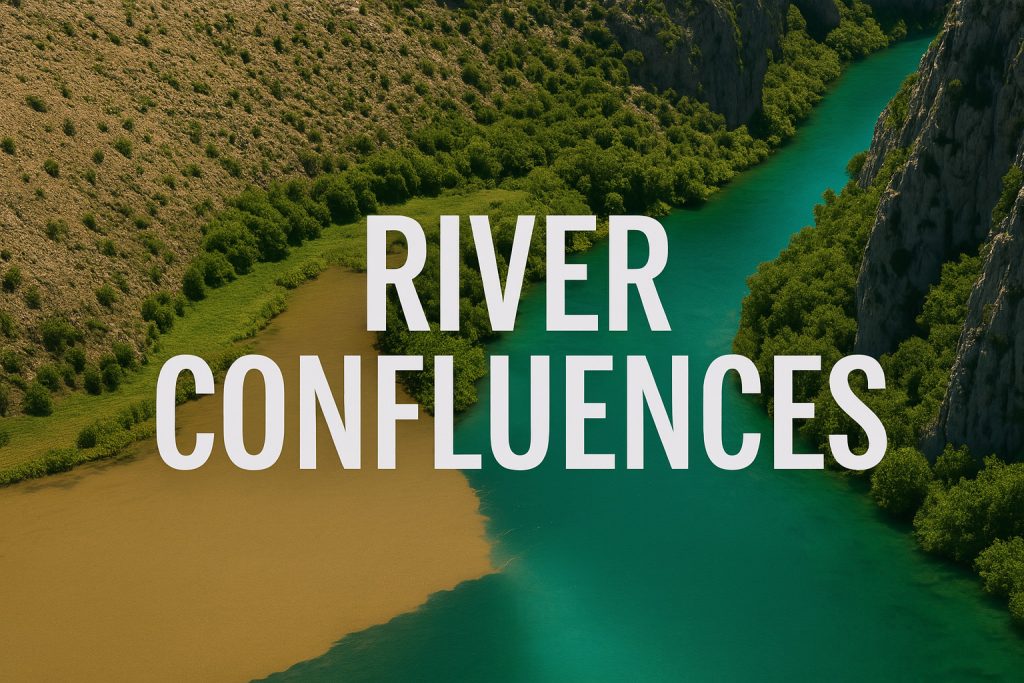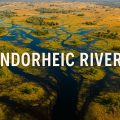Discover the fascinating world of river confluences—where rivers meet, colors mix, canyons merge, and naming traditions defy hydrological logic.
When two rivers meet, it’s more than just a hydrological event—it’s a dramatic moment in the life of a landscape. Known as a confluence, this natural merging of waterways can create striking visuals, complex ecosystems, and even deep questions about geography and naming. Some confluences blend peacefully; others clash in swirls of color and current. Either way, they tell a story far older than we are.
Confluence 101: When Waterways Collide
A confluence is the point where two or more streams or rivers flow together. One river is typically referred to as the main river, while the other is called a tributary—but determining which is which isn’t always straightforward.
Confluences are often recognized by a dramatic contrast in water color, especially when the merging rivers carry different sediments. For instance:
- The Rhône and Arve Rivers in Geneva, Switzerland, famously display a stark color boundary—one turquoise from glacial melt, the other muddy brown from alpine runoff.
- The same awe-striking phenomenon occurs at the meeting of the Rio Negro and the Amazon River (Solimões) near Manaus, Brazil. Here, two giants of the Amazon Basin converge—one dark as black tea, the other a light muddy brown—and yet their waters run side by side for several kilometers without mixing.
Sometimes, even the riverbeds differ—one steep and rocky, the other soft and silty—creating microhabitats where species from both rivers intermix.
Who Keeps the Name?
You might think the larger river always “wins” and keeps its name at a confluence. Surprisingly, this isn’t always the case.
Take the Missouri and Mississippi Rivers in the U.S.: by volume and length, the Missouri is arguably mightier, yet it’s the Mississippi that continues downstream. Why? Often, historical, cultural, or colonial naming traditions override hydrological logic.
The confluence of the Mississippi and Ohio rivers – smaller Mississippi retains the name
Terminology at a Glance
- Mainstem River – the primary river that continues after the confluence.
- Tributary – a smaller or secondary river feeding into a larger one.
- Left or Right Tributary – named from the perspective of looking downstream on the main river.
- Confluence Zone – the immediate area where mixing occurs, often with unique hydrological behavior.
- Sediment Plume – when rivers of different sediment loads meet, creating visible swirls or color streaks.
When Canyons Merge
Sometimes, it’s not just the rivers that meet—it’s their gorges too. In Croatia’s karst landscape, the Krupa and Zrmanja not only converge as rivers, but their canyons also fuse into a single majestic rift carved through limestone. These geological junctions can be as dramatic as the rivers themselves, forming new pathways for erosion, microclimates, and unique habitats.
A Place of Contrast—and Connection
Confluences are more than the sum of their parts. They’re ecological mixing bowls, cultural boundaries, and geological masterpieces. Some are sacred, like the Ganges-Yamuna-Sarasvati Sangam in India. Others are scientifically vital, where nutrients and species meet and mingle.
They invite us to pause and consider: Where does one river end and another begin? Why do we name the world the way we do?
📍 Have you visited a river confluence that left you in awe? Share your favorite meeting-of-the-waters moment with us.
🔎 Read more on worldrivers.net about river canyons, tributary systems, and the mysteries of river naming.


